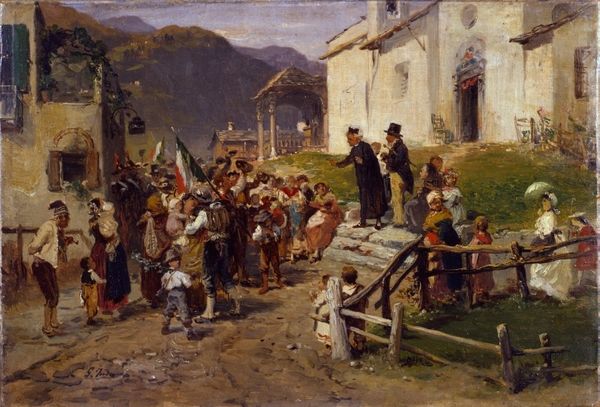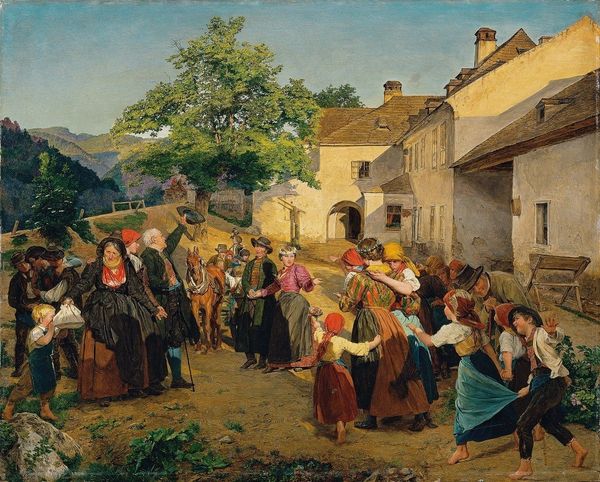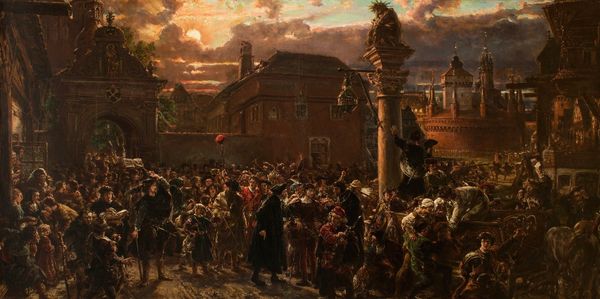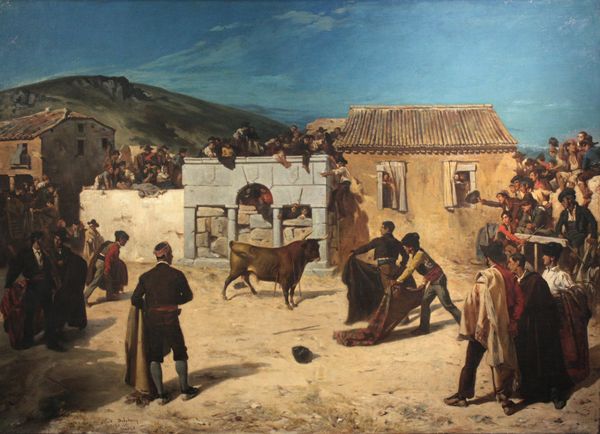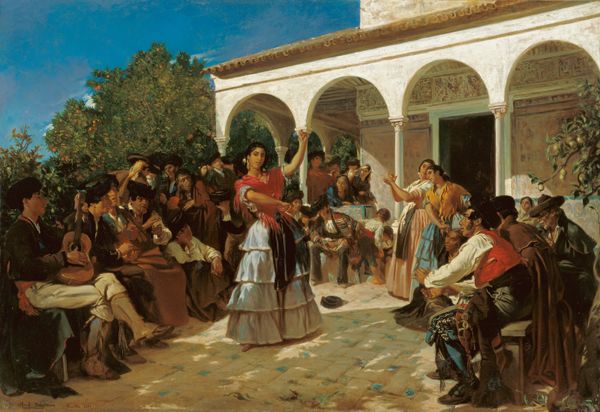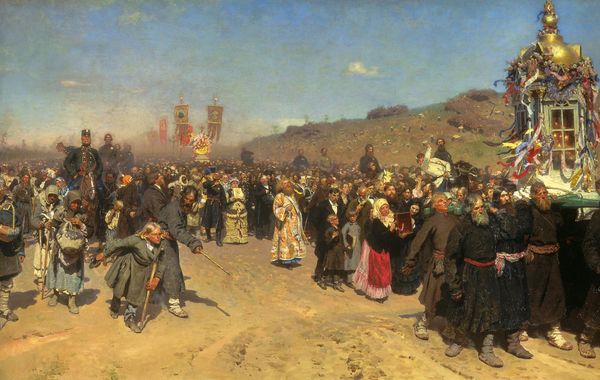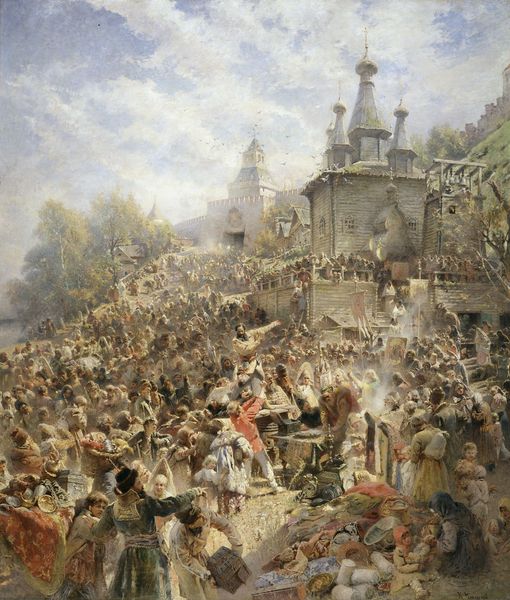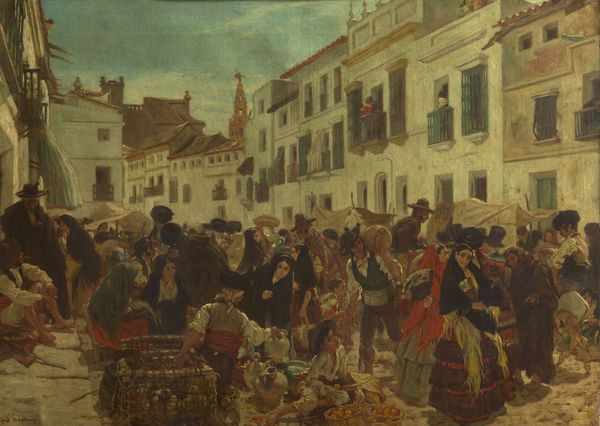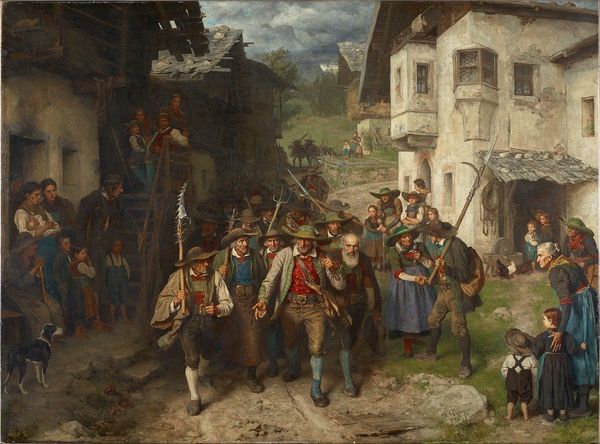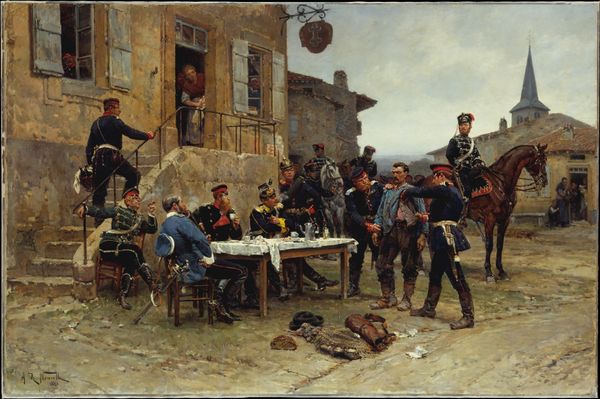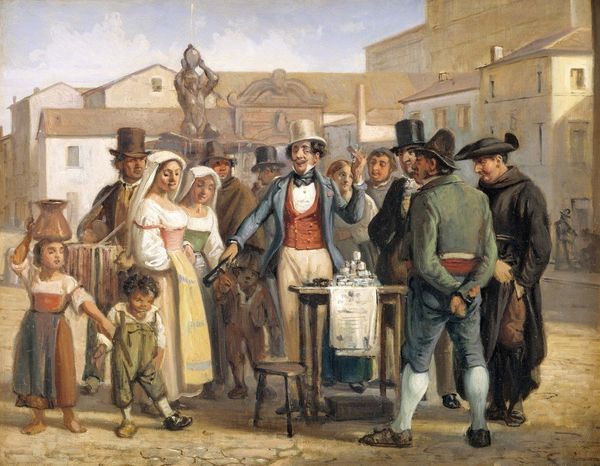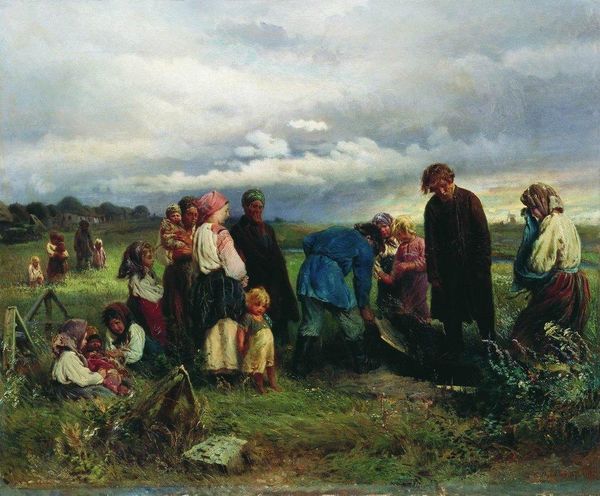
Dimensions: 94.8 x 135.5 cm
Copyright: Public domain
Curator: What a commotion of emotion! The canvas teems with figures bidding farewell; there’s an almost palpable sense of… wistful optimism, perhaps? Editor: Gerolamo Induno captured quite the scene in his 1881 oil painting, "The Departure of the Conscripts in 1866.” It’s ripe for discussion about Italian unification, wouldn't you say? The painting illustrates conscription at the end of the Third Italian War of Independence. Curator: Oh, absolutely! It feels like a stolen moment from a grand opera, all the passion swirling together. Look at that couple embracing, a solider and his beloved – a quintessential depiction of romantic patriotism. A nation is forged through tender sacrifice, so heavy... Editor: Indeed. Notice how the military officials, set apart by the church, appear almost detached from the emotional chaos? Their composed distance speaks volumes about the bureaucratic necessities versus individual experience of conflict. It calls into question how nationalism affects intimate lives. Curator: Right! It’s like they're standing on the precipice of change. A few figures stand stiffly, caught between stoic duty and heartbroken farewell. I'm wondering if Induno was hinting at ambivalence? I detect so much sadness behind the outward show of strength. Editor: The flags waving and cheering children reinforce the theme of collective fervor, and I see what you mean. But observe that the community, although outwardly supportive, is mostly represented by women and children. The image emphasizes what war takes from society beyond just soldiers. And look carefully: it appears that Induno did not overlook disability and infirmity and instead gave importance to every class involved in the conflict, which adds complexity. Curator: A crucial detail that adds layers, absolutely! A quiet visual reminder about the cost of liberty that isn't always glorified. You know, that adds even more emotional complexity to what initially felt so straightforward. The picture now resonates at a deeper pitch, darker, but it also offers glimpses of how, and who, is expected to "simply go on" when conflicts resolve... Editor: Precisely! It invites viewers to contemplate the multifaceted narratives of war and nationhood, reminding us that history painting isn’t simply about recording events, but interpreting lived experiences shaped by political realities. Curator: This romantic vision tinged with realistic pain. It is an unsettling mix of patriotic zeal and human frailty in a single brushstroke! It leaves me reflective about similar, endless cycles... Editor: I agree! Induno makes us reconsider whose story really gets told.
Comments
No comments
Be the first to comment and join the conversation on the ultimate creative platform.
